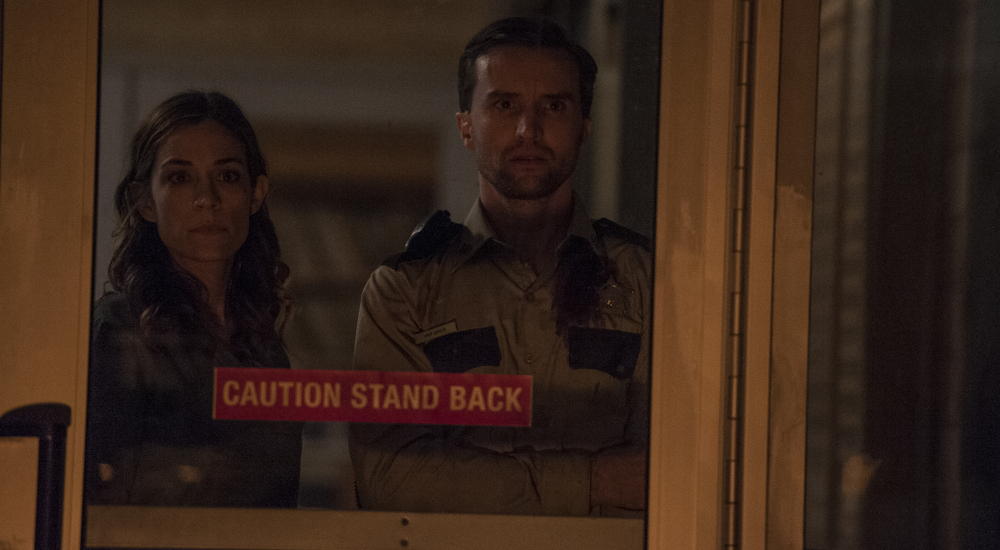“We’re in hell.”
Ever wondered what lies below a hospital’s floor? Officer Daniel Carter is about to find out.
After picking up a blood-soaked young man on the side of a deserted road on the outskirts of town, Officer Carter heads to a nearby hospital in search of help. But upon arrival he (along with a small group of others) find themselves surrounded by a group of white-robed, dagger-swinging cultists. Though afraid to venture outside, the group is quickly beginning to realize that things are even more dangerous inside.
It doesn’t take long for the major influences to rise to the surface as The Void bears a strong resemblance to works by both John Carpenter and Clive Barker. Their fingerprints appear on nearly every frame as both directors appears to be heavy influencers to both Gillespie and Kostanski.
But unlike films of the past, which bathe in the riches of the early 1980s genre classics, The Void is able to carefully pay homage but still work to craft something of its own. The conscientious merge helps to give the film a strong backbone, allowing both directors to experiment with other qualities to help forge a new set of rules for the throwback genre film.
Bearing almost a single setting, arriving (and staying) at the hospital some ten minutes into the story, The Void is able to exploit a place that many go for refuge/safety, turning it on its head and ultimately transforming that connecting emotion into one of fear.
From the moment Officer Carter steps foot inside the automatic doors pure insanity ensues. Humans transforming into alien-like animals will initially send shivers down your back; however, all bets are off when the group maneuvers their way into the unknown basement, coming face to face with a nightmare viewpoint of purgatory as you get up close and personal with the fiery pit of hell . There are no words to fully emphasize the magnitude of the final twenty minutes other than the fact that the film’s conclusion is not for the weak of stomach.
But before you get to that point you find yourself squirming in your seat as the group, uncertain of their own fate, look out on the lawn to see a small army of white-robbed figures who are recognized only by the black triangle across the face. Surrounded with nowhere to go, the group sees no way out, a predicament that only grows worse when one of them goes into labor.
And that is what allows The Void to work. Gillespie and Kostanski understand what they are creating, refuse to overdo the thematics, and keep the storyline simple as they spend the majority of their time developing the visual aesthetics. That isn’t to say that there aren’t a few attempts to better dissect those stranded in the hospital (almost all of which suffer from one stereotype or another). From Carter’s personal demons and a transferred intern who doesn’t want to be there in the first place to a string of coincidental relationships (all of which come with an absurd amount of baggage) the development is there - for those who do care. But for those who simply want to get the shit scared out of them? You can bypass the dialogue and focus on the visuals - that’s where the meat lies.
Occasional one-liners successfully generate a laugh or two, effectively keeping the mood lightened, ultimately allowing the film to consistently up the ante without pushing things too far over the top. The method was a gamble, having not been fully exploited since the early 90s, but it somehow works here, prompting buckets upon buckets of blood that are sure to infiltrate your mind and have you waking in a puddle of sweat.
*This review was original published as part of our 2016 Fantastic Fest coverage.

